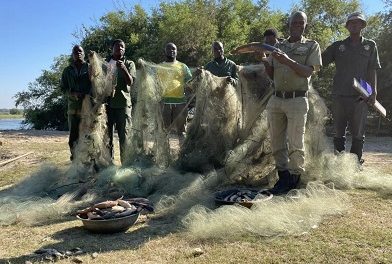
Researchers look at Namib bats to draw ecological and conservation conclusions

Due to their nocturnal preference, bats are clouded in mystery, maligned in folklore, and generally misunderstood in terms of their ecological niche. However, in a new study headed by a post-graduate researcher, the elusive bats of the desert are the focal point to try and define their key role in the arid ecology.
“Most people know very little about bats and have a very negative perception of them, from growing up with various myths and legends,” said biologist Angela Curtis, currently working with the Namib Desert Bat Project based at the Gobabeb Research and Training Centre on the banks of the Kuiseb river some 110 kilometres from Walvis Bay. The project is supported by the Nedbank Go Green Fund.
For Curtis, the opportunity to study bats came by chance. Not having specialised in bats before, she only discovered what amazing and fascinating creatures they are, and how little she knew about them. “There is a whole world out there that most of us are oblivious to” she said about her new insight after working with bats for a while.
Although twenty percent of all mammal species are bats, and their ecological services crucial, “their conservation is often overlooked because they are nocturnal and difficult to study,” Curtis explained.
Among other observations, she is studying the impact of artificial light on bats. “This could have far reaching implications for conservation,” said Curtis.
Contrary to popular belief, there are thousands of bats worldwide with more than 120 species in southern Africa. New species continues to be discovered regularly.
In Namibia little is known about local species despite the fact that the Namib Desert and other parts of the country are surprisingly rich in bat species. Ten species are known, but Curtis now believes the actual number may be as high as 24.
In Namibia, it has been found that bats have acquired a range of remarkable adaptations to the difficult environment, including dropping their body temperature by more than 10° C to slow down metabolic rates to conserve water and energy.
The support she receives from the Go Green Fund has enabled the researcher to obtain two ultrasonic bat recorders and specialised echo-location analysis software. She said the funding increased her ability to carry out the work exponentially. “I would not have been able to complete the project without the funding,” she stated.
Like most other animals, bats are threatened by a plethora of adverse conditions, usually human induced. “Loss of habitat, pesticides and the bush meat trade are currently the biggest threats to bat populations worldwide,” she cautioned.
Angus Middleton of the Namibia Nature Foundation, Nedbank’s technical support partner and administrator of the Go Green Fund, said bats have been proven to be very important bio-indicators whose presence or absence can be used to understand the environmental state of areas.
Caption: “Don’t be scared, they do bite but they will never accidentally fly into you.” Bat researcher, Angela Curtis (right) with a group of apprehensive students working on the Namib Desert Bat project under the auspices of the Gobabeb desert research station. The work is supported by the Nedbank Go Green Fund.










































